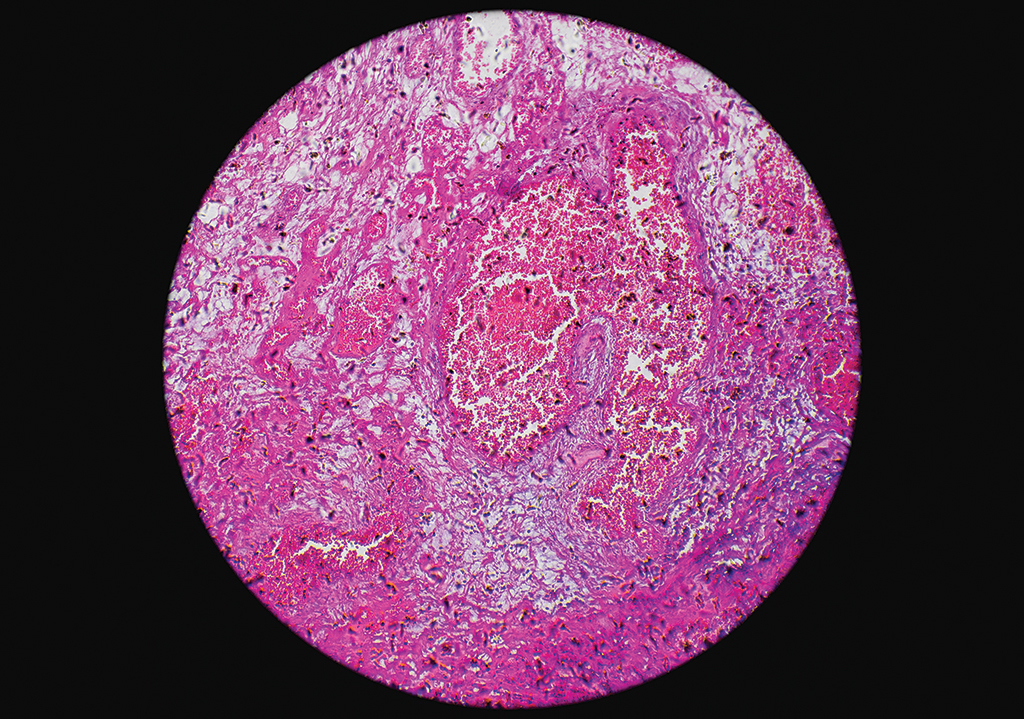As the pharma and biotech industries attempt to claw their way back from pandemic disruption, 2022 is shaping up to be a year of data readouts, approvals and launches that reinforce strengths in existing blockbuster franchises.
Dermatology, not often at the top of the “groundbreaking pharma” list, finds itself in the spotlight this year with a number of drugs set for approvals that could potentially offer a huge boost to existing blockbuster portfolios. Bristol Myers Squibb’s widely anticipated deucravacitinib produced stellar results for psoriasis, particularly vis-à-vis Amgen’s Otezla, making it the most promising potential blockbuster on the list.
Pfizer’s abrocitinib also produced strong head-to-head data with Sanofi’s Dupixent, which all but guarantees a 2022 launch in atopic dermatitis (AD). Eli Lilly’s lebrikizumab also hit its Phase III topline targets in AD, paving the way for further positive data readouts and a potential fast-track approval.
On the other hand, Food and Drug Administration concerns around JAK inhibitors, triggered by an ongoing post-marketing safety review of Pfizer’s JAK-inhibitor Xeljanz for rheumatoid arthritis, puts a cloud over drugs linked to this mechanism. While this might impact exact labeling, approvals still remain likely.
A number of other autoimmune disorders are set to see existing blockbuster franchises expand with approvals for new indications. UCB’s Bimzlex is targeting approvals in psoriatic arthritis and ankylosing spondylitis and Abb-Vie’s Skyrizi will attempt to prove itself worthy of approvals for psoriatic arthritis and Crohn’s disease. Should the drug achieve those twin approvals, it might allow AbbVie to reach an overall $6 billion in Skyrizi sales by 2025.
The company has quite a bit of incentive to get it right. AbbVie has been aggressive in its attempts to alleviate the impact of Humira biosimilars, as witnessed by its pursuit of an approval of Rinvoq in ulcerative colitis. This represents a potentially lucrative addition to its autoimmune portfolio, with expected 2025 sales of $1.4 billion in ulcerative colitis alone.
The neurology landscape is particularly active, with two drugs vying for launch in myasthenia gravis. Argenx is lined up for a potential 2022 launch of efgartigimod, with the goal of supplanting Alexion Pharmaceuticals’ Soliris. AstraZeneca, which closed on its acquisition of Alexion in July, also has a dog in the fight: It is preparing to file Ultomiris for approval for the same indication.
Meanwhile, in Alzheimer’s disease, Eli Lilly is stepping up with a challenge to Aduhelm, Biogen’s still-controversial treatment. It has its own beta amyloid-targeting monoclonal antibody that appears to show better efficacy — at least, so far. Biogen and Eisai have also initiated a rolling submission to the FDA of lecanemab, a comparable monoclonal antibody.
While oncology is always an active therapeutic area, the months ahead will see important drug launches in multiple myeloma and melanoma. Johnson & Johnson aims for two approvals in multiple myeloma with Cilta-cel and teclistamab, while Iovance Biotherapeutics will try again with its biologics license application (BLA) resubmission for lifileucel in metastatic melanoma.
While mainstream indications dominate this year, rare disease launches remain very much on the radar. Alnylam Pharmaceuticals is preparing for the approval of vutrisiran for ATTR polyneuropathy and the Phase III readout for Onpattro in ATTR cardiomyopathy. Meanwhile, Bluebird Bio is looking to 2022 as the year it finally nabs U.S. approval for Zynteglo in beta thalassaemia after a tough and messy regulatory skirmish with the FDA.
Finally, Eli Lilly, AstraZeneca/Amgen and Novartis are aiming to extend successful franchises with a handful of potential blockbuster market entrants. Lilly will expand its stronghold in type 2 diabetes with the eventual launch of tirzepatide, which is estimated to hit $2.7 billion in sales by 2025. Novartis will likely come through with an approval of its PCSK9 inhibitor inclisiran ($2.3 billion by 2025 for hypercholesterolemia).
AstraZeneca hopes to add a game-changing drug for severe asthma, tezepelumab, to its robust list of asthma treatments ($1.6 billion by 2025). Further down the pipeline is Novartis’ Xolair, which aims to report Phase III data for food allergy prevention in late 2022. If successful, this would represent a massive disrupter in a wide-open and growing market.
Agents profiled in this report were chosen in consultation with inThought Research, Ipsos Healthcare and Adis R&D Insight. Analyses of featured products include the latest clinical data, revenue forecasts, expected launch dates and likelihood of success as of early October 2021.

Dermatology
Deucravacitinib
Bristol Myers Squibb, pre-registration
Psoriasis
Clinical trial data: Deucravacitinib is an oral selective inhibitor of tyrosine kinase 2 (Tyk2). Two 16-week Phase III trials showed superiority to both placebo and Amgen’s Otezla. Significantly more patients achieved better skin clearance scores (PASI 75 and sPGA (0/1) endpoints) versus placebo, while the drug was well tolerated with a low discontinuation rate. An approval is expected sometime in 2022.
InThought comment: While data looks good enough for an approval, its exact labeling remains the question, given that its mechanism is linked to the JAK inhibitor family under FDA safety review. Its oral delivery makes it an attractive alternative to biologic injectables. While it will give Otezla strong competition, it may still take time to shift existing physician and patient comfort levels with Otezla. — Amanda Weyerbacher, senior principal, inThought Research
Credit Suisse sales forecast:
$2.4 billion by 2025
Ipsos comment: Given clinical trial results suggesting superior efficacy and a similar safety profile to Otezla, deucravacitinib could potentially supplant Otezla as the preferred oral treatment for plaque psoriasis. If the FDA accepts TYK-2 as something separate from JAK-inhibitors (and avoids a restrictive black-box warning), we believe uptake would be quick and robust. — Scott Morano, SVP, healthcare, Ipsos
Abrocitinib
Pfizer, pre-registration
Moderate-to-severe atopic dermatitis
Clinical trial data: Abrocitinib is an oral JAK-1 inhibitor with six completed clinical trials (in the JADE program) all showing statistical superiority versus both placebo and Sanofi’s monoclonal antibody Dupixent. Safety is the issue, due to the FDA’s concerns around the safety of JAK-inhibitors. However, the drug was approved in the U.K. in September, so an anticipated 4Q 2021 PDUFA will likely pave the way for a successful 2022 launch, with specific labeling around safety.
InThought comment: Recent results from the JADE-DARE trial, comparing abrocitinib with Dupixent, specifically gives this drug a lot of leverage for a potential approval and launch. Its oral delivery and rapid onset of action combined with its itch relief will make it an attractive option over Dupixent — Weyerbacher
Credit Suisse sales forecast: $836 million by 2025
Ipsos comment: Despite slipping behind in the race to the EU market against fellow JAK inhibitors (AbbVie’s Rinvoq, Lilly’s Olumiant) and Leo Pharma’s IL-13 Adtralza, there will likely be a high level of anticipation for abrocitinib, as both physicians and patients alike welcome the expansion in therapeutics for moderate-to-
severe atopic dermatitis. This product has shown strong therapeutic benefit for its speed at reducing itch and inducing skin clearance. The one watchpoint will be the cloud cast over the safety of JAK inhibitors by the FDA. — Hannah Brown, autoimmune therapy monitor, healthcare, Ipsos
Lebrikizumab
Eli Lilly, Phase III,
Moderate-to-severe atopic dermatitis
Clinical trial data: Lebrikizumab is a monoclonal targeting IL-3 studied in two monotherapy trials (ADvocate 1 and 2) along with three ongoing combination studies. The monotherapy studies showed superiority in skin clearance and itch improvement after 16 weeks versus placebo.
InThought comment: While data so far on itch relief seem promising and possibly the major market attraction, it’s hard to understand how lebrikizumab will really differentiate itself from Dupixent, which is very similar (targeting IL-13 and IL-4). Data so far haven’t elucidated exactly how the subtle difference in mechanism targets will translate to different responses and some dermatologists see this as a me-too drug to Dupixent. — Weyerbacher
Credit Suisse sales forecast: $488 million by 2025

Autoimmune Disorders
Bimzlex (bimekizumab)
UCB, Phase III
Psoriatic arthritis (PsA) and ankylosing spondylitis (AS)
Clinical trial data: Bimekizumab is a monoclonal antibody that neutralizes both interleukin-17A and IL-17-F. It was recently approved for psoriasis, with strong Phase III results fueling expectations for positive Phase III data in psoriatic arthritis and ankylosing spondylitis in early 2022. Possible material label expansions could follow by the end of 2022 or early 2023.
InThought comment: Data released in psoriasis has been extremely well received and UCB has set a high bar for PsA and AS Phase III results and eventual approvals. We still need to see the data to truly gauge whether this dual mode of action (IL-17F and A) offers a meaningful differentiation to IL-17. — Weyerbacher
Credit Suisse sales forecast: $540 million for psoriatic arthritis and ankylosing spondylitis by 2025; $1.04 billion by 2025 for all indications
Ipsos comment: For PsA specifically, while IL-17s and IL-23s are already available, bimekizumab will be the first “dual inhibitor” antibody therapy in the IL class to enter, with evidence showing the synergistic benefit of blocking both IL-17A and IL-17F. The AS biologic treatment landscape is currently a little more limited in comparison, with two IL-17s and one JAKi therapy being the only alternative mechanism outside of the long-standing anti-TNFs. The opportunity for an additional targeted therapy will certainly be an exciting area to watch. — Elizabeth Baynton, autoimmune therapy monitor, healthcare, Ipsos
Skyrizi (risankizumab)
AbbVie, pre-registration
Psoriatic arthritis and Crohn’s disease (CD)
Clinical trial data: Skyrizi is an IL-23 inhibitor approved for psoriasis in 2019. AbbVie has completed two positive Phase III
trials in PsA (PASI 90 and physical function at week 24 versus placebo) and three positive trials in CD (clinical remission and endoscopic response at week 12 versus placebo). The company has submitted both drugs to the FDA for approval (psoriatic arthritis in April, Crohn’s disease in September) for anticipated approvals in 2022.
InThought comment: Skyrizi is another IL-23 inhibitor, entering a relatively crowded market already served by Tremfya, Stelara and Entyvio. While label expansions seem like a way for AbbVie to build in anticipation of Humira biosimilars, Skyrizi should be a strong competitor supported by strong data. Uptake may come down to marketing strategies and physician/patient preference. — Weyerbacher
Credit Suisse sales forecast: $6.05 billion by 2025 for all indications
Ipsos comment: While not first-in-class, AbbVie’s Skyrizi has certainly laid claim to having best-in-class efficacy among IL-23s for psoriasis. It has a convenient dosing regimen and high rates of skin clearance, so expanding into the psoriatic arthritis landscape should prove almost effortless. More interesting will be its performance in the IBD space, where many established biologics remain dominant and gastroenterologists have little or no experience with the IL-23 drug class. AbbVie will be hoping for similar success with what could prove to be Humira’s spiritual — and financial — successor in Skyrizi. — Penny Robinson, autoimmune therapy monitor, healthcare, Ipsos
Rinvoq (upadacitinib)
AbbVie, pre-registration
Ulcerative colitis (UC)
Clinical trial data: Rinvoq is a JAK inhibitor originally approved for rheumatoid arthritis and eyes an expansion into UC. The company completed two positive induction studies (U-ACHIEVE and U-ACCOMPLISH) and a positive maintenance study over 52 weeks. AbbVie submitted its regulatory applications to the FDA and EMA in September for a potential 2022 approval.
InThought comment: While approval is expected — the whole JAK class has been painted with a brush of FDA safety issues — there is some uncertainty around the kind of label it might receive. The oral delivery gives Rinvoq an advantage over other UC treatments, however. Bristol Myers Squibb’s ozanimod was recently approved for UC, which will provide stiff competition. — Weyerbacher
Credit Suisse sales forecast: $1.4 billion by 2025 for ulcerative colitis; $4.7 billion by 2025 for all indications
Ipsos comment: With good Phase III efficacy in UC, Rinvoq has an opportunity to carve out a strong niche in a much less crowded advanced therapy market than it faces in RA and psoriatic arthritis. However, the elephant in the room for any JAK inhibitor is its safety profile. — Peter Collins, autoimmune therapy monitor, healthcare, Ipsos

Neurology
Efgartigimod
Argenx, pre-registration
Generalized myasthenia gravis
Clinical trial data: Efgartigimod is a first-in-class FcRn antagonist with a positive Phase III trial (ADAPT, released in mid-2020) demonstrating a statistically significant improvement on quality-of-life score (68% efgartigimod versus 30% placebo). An approval is expected in late December for a 2022 launch.
InThought comment: Phase III results were strong and appear better than standard of care (Alexion’s Soliris). If approved, efgartigimod should get a broader label than Soliris and reach around 20,000 MG patients. Argenx went for a unique trial design, administering the drug in three four-week cycles. And while this attempts to emulate the real world, doctors will need to be properly educated on the most effective administration of the drug, which could be a barrier to rapid uptake. — Adam Schaffner, director of research, InThought Research
Credit Suisse sales forecast: $830 million by 2025 for MG; $1.1 billion combined indications
Ipsos comment: Phase III data showed patients are more than twice as likely to improve their myasthenia gravis activities of daily living (MG-ADL) score with a favorable safety profile. While there are four additional clinical-stage FcRns at its heels (particularly UCB’s roznaolixizumab), efgartigimod is well positioned. It recently received ICER’s health-benefit price benchmark (a cost-effectiveness score) higher than that of Alexion’s Soliris. — Talin Sesetyan, VP, rare diseases center of excellence, healthcare, Ipsos
Ultomiris (ravulizumab)
AstraZeneca/Alexion, pre-registration
Generalized myasthenia gravis
Clinical trial data: Ultomiris is a long-acting C5 inhibitor for gMG. Positive results for its 175-patient Phase III trial in mid-2021 showed improvements on the daily living profile score at 26 weeks, as well as maintenance over 52 weeks. Approval filings in the U.S., EU and Japan are expected in late 2021 or early 2022.
InThought comment: While the top-line Phase III data was positive, initial disclosures on primary and secondary endpoints raise some hesitancy on whether Ultomiris is better than Soliris. More data is needed to determine if Ultomiris will have a meaningful impact in this patient group. — Schaffner
Credit Suisse sales forecast:
$770 million in myasthenia gravis alone; $4.9 billion in all indications
Ipsos comment: A more attractive Q8W infusion schedule than Soliris’ Q2W schedule may help a broader patient population, including patients with milder symptoms or those earlier in their treatment journey. — Sesetyan
Donanemab
Eli Lilly, Phase III
Alzheimer’s disease
Clinical trial data: Donanemab is a monoclonal antibody targeting amyloid-beta. While in an ongoing Phase III study, Lilly has decided to submit earlier proof-of-concept data to the FDA by the end of this year, and success could pave the way for a 2022 conditional approval. Lilly’s decision was based on data that looked much better than Biogen’s recently approved Aduhelm, which itself caused controversy among neurologists at the time of its approval. Biogen and Eisai also initiated a rolling submission to the FDA of their similar monoclonal antibody lecanemab, based on Phase IIb data in September.
InThought comment: Going off 18 months of open-label data for donanemab, it looks a bit better than Aduhelm, in terms of achieving twice the plaque clearance and overall disease modification. It’s unclear if Lilly can justify an accelerated approval — particularly after the FDA faced backlash around Aduhelm’s approval on mixed and non-confirmatory data sets, which itself triggered an internal investigation. Biogen/Eisai’s lecanemab is due to report Phase III results a little earlier (in September 2022), but overall donanemab has the better profile of the three beta-
amyloid antibodies. — Schaffner
Ipsos comment: While the first-to-market agent is often considered the “winner” of a race, the Alzheimer’s disease-modifying intervention battle is far from over. Between Aduhelm’s launch and both donanemab and lecanemab receiving breakthrough therapy designation in recent months, the field is wide open. Some might argue the FDA is redrawing the lines on the track in the middle of the race, which is leading many consumers to be confused and concerned by their approval processes. — Michele Godby Drennen, SVP, healthcare, Ipsos

Oncology
Ciltacabtagene autoleucel (Cilta-cel)
Johnson & Johnson/Legend Biotech, pre-registration
Multiple myeloma
Clinical trial data: Cilta-cel is a B-cell maturation antigen (BCMA) CAR-T for heavily pre-treated multiple myeloma patients. Updated results of the Phase Ib/II Cartitude-1 trial showed an overall response rate of 96%, with a stringent complete response rate (sCR) of 67%. The PDUFA approval date is November 29, 2022.
InThought comment: Cilta-cel is a BCMA CAR-T with very high efficacy, especially compared to Bristol Myers Squibb’s/Bluebird Bio’s Abecma approved this year for fifth-line use. Response rates around 90% (versus 70% for Abecma), sCR between 50%-70% make it attractive. While the cytokine release syndrome (CRS) risk is also lower, it still exists and will require education around its management. Overall KOL sentiment favors Cilta-cel, while its trial population may also spur an approval in the earlier fourth-line setting. — Lavan Khandan, senior analyst, inThought Research
Credit Suisse sales forecast: $285 million by 2025
Ipsos comment: While no head-to-head studies exist, it is likely that comparisons will be made across these two therapies and initial experiences will guide further differentiation. An important differential factor will be logistics — i.e., which manufacturer can ensure easy and consistent support for the logistical and manufacturing process, as well as other support programs for patients and physicians. — Eric Blouin, SVP, oncology, Ipsos
Teclistamab
Johnson & Johnson, Phase II
Multiple myeloma
Clinical trial data: Teclistamab is a BCMA-CD3 bispecific antibody. Phase I data presented at ASCO from its Phase I/II trial showed an overall response rate (ORR) of 65% in 40 heavily treated patients and a very good partial response (VGPR) or better in 58% of patients; 30% achieved complete response rate (CR) or better. A potential submission for accelerated approval in the Q1 2022 could yield Q4 approval.
InThought comment: While its reported ORR in the fourth line is lower than BCMA CAR-Ts, it is also “off the shelf” — meaning it can circumvent a lot of the hurdles faced by traditional autologous CAR-T therapies that require T-cell harvesting. This also opens up more opportunity for earlier-line treatment and off-label use. — Khandan
Credit Suisse sales forecast: $230 million by 2025
Ipsos comment: Phase I results demonstrated promising efficacy with durable responses that deepened over time, and it was well tolerated. BCMA/CD3 bispecific antibodies such as teclistamab could become off-the-shelf competitors to CAR-Ts such as Ida-Cel and Cilta-cel, especially within the community setting or in patients unsuitable or unwilling to proceed with CAR-T treatment. A crowded pipeline shows Pfizer, BMS, Amgen, Regeneron and AbbVie all with bispecific antibodies in clinical development. — Blouin
Lifileucel
Iovance Biotherapeutics, pre-registration
Metastatic melanoma
Clinical trial data: Lifileucel is an autologous cell therapy technology using tumor-infiltrating lymphocytes (TILs). Recent follow-up data showed median duration of response (DOR) was not reached (33.1 months median study follow-up) in one cohort, while the ORR remained at 36.4%. Iovance’s anticipated launch has been delayed by regulatory feedback, and a resubmission is expected in the first half of 2022.
InThought comment: The FDA requested potency assays due to concerns around consistency and variability. There is some apprehension around harvesting cells using TILs because a biopsy is needed to isolate T cells. As such, this could impact eventual uptake. TILs may be more of an intermediary platform for solid tumors while better technologies are developed. — Khandan
Ipsos comment: Drug treatment options are limited for melanoma patients who do not respond well to targeted or immuno-oncology therapies. Lifileucel could be the first T-cell transfer therapy available as an alternative. — Alessandra Franceschetti, global oncology monitor, healthcare, Ipsos

Rare Diseases
Vutrisiran
Alnylam Pharmaceuticals, pre-registration
Polyneuropathy of hereditary ATTR amyloidosis
Clinical trial data: Vutrisiran is an RNAi therapeutic with a fast-track designation for ATTR amyloidosis. Data from the HELIOS-A study showed improved efficacy versus placebo and Alnylam’s own Onpattro (already approved for the indication), while also offering more favorable safety and greater convenience with thrice-monthly subcutaneous dosing.
InThought comment: Quarterly vutrisiran should follow on the heels of the every-three-week Onpattro, and it looks like there will be a more expansive positioning with this construct: Not only will there be subsequent data sets in hATTR-associated cardiomyopathy, but Alynlam is also developing an every-six-month subcutaneous version that should go before regulators in the 2023-2024 timeframe. — Dr. Leon Henderson-MacLennan, medical adviser, inThought Research
Ipsos comment: Vutrisiran looks set to become the preferred treatment for hATTR polyneuropathy. This combination of benefits should expand Alnylam’s patient base somewhat relative to Onpattro. The bigger play for vutrisiran (and Onpattro) comes with potentially adding an indication for hATTR cardiomyopathy, for which it is conducting
trials. There are some initial encouraging signs in that direction based on exploratory biomarkers (such as significantly improved NT-proBNP related to cardiac stress). The full clinical significance in this patient group remains to be seen. — Lynda Levy, SVP, head of global rare disease center of excellence, healthcare, Ipsos
Onpattro (patisiran)
Alnylam Pharmaceuticals, Phase III
ATTR cardiomyopathy
Clinical trial data: Alnylam’s Onpattro (patisiran) is already approved for hATTR polyneuropathy and is about to complete a large Phase III APOLLO-B trial and read out in mid-2022. This trial was based on encouraging data around a number of exploratory cardiac endpoints in the landmark Phase III APOLLO trial.
InThought comment: Onpattro is an interesting RNA-based medicine marketed for hATTR-associated polyneuropathy. It’s one whose use profile
may be made considerably more attractive should impressive data emanate from Phase III data in hATTR-
associated cardiomyopathy next mid-year. — Henderson-MacLennan
Credit Suisse sales forecast:
$363 million by 2025
Ipsos comment: Onpattro will primarily compete with Pfizer’s established oral tafamadis treatments Vyndaqel and Vyndamax. The level of efficacy in the APOLLO-B trial will be critical in determining success versus tafamadis and other emerging competitors. Factors to watch include convenience of administration, cost and access, as well as the impact of the dual indication with polyneuropathy and the ability to compete with Pfizer’s marketing muscle. — Levy
Zynteglo (betibeglogene autotemcel)
Bluebird Bio, pre-registration (U.S.)
Beta thalassemia
Clinical trial data: Zynteglo was approved in Europe but plans were voluntarily put on pause for nearly five months in 2021 after two blood cancer cases were linked to its use. Commercialization resumed in July as Bluebird completed its rolling submission to the FDA for approval in adult, adolescent and pediatric beta thalassemia. It was based on two Phase III studies and two supporting Phase I/II studies showing a consistent safety profile with myeloablative busulfan conditioning.
InThought comment: Zynteglo’s data streams and trial/regulatory navigation have been as messy as its European launch aspirations. This is not meant as disparaging; rather, it’s part and parcel of the rather inherent challenges in the highly innovative cell and gene therapy industry, especially in areas as complex as the hemoglobinopathies. I think that the chance it becomes an option for transfusion-dependent patients is good, provided that hematologists are comfortable identifying best candidates for receipt. — Henderson-MacLennan
Ipsos comment: Zynteglo/Beti-cel would certainly be an exciting arrival on the treatment landscape. While it has a high price tag, insurers have covered highly priced therapies in the past where there are limited treatment options available. With approval, Beti-cel would be a welcome addition to an area, like beta thalassemia, where there are so few approved. — Nicole Allie, global therapy monitor, healthcare, Ipsos

Others
Metabolic Disorders
Tirzepatide
Eli Lilly, pre-registration
Type 2 diabetes
Clinical trial data: Tirzepatide is a once-weekly GIP and GLP-1 receptor agonist combining two important mechanisms into one novel molecule. Phase III results so far (SURPASS 1 and 2) have shown superior blood glucose and body weight reductions over a 40-week period versus placebo and injectable Ozempic (semaglutide). A filing at the end of 2021 could yield a late 2022 launch in type 2 diabetes.
InThought comment: Topline Phase III and maturing datasets showing glycemic control performance versus placebo and Ozempic are setting this up to be a significant competitor in the treatment of type 2 diabetes. Cardiovascular outcomes data (available around 2024) are awaited to speak solidly on its massive potential, and expansions into other often co-morbid metabolic conditions (obesity, non-alcoholic steatohepatitis) will likely follow. One caveat is that there needs to be better identification of patients at possible risk of excess hypoglycemia, so that exposure and risk/benefit can be managed. — Henderson-MacLennan
Credit Suisse sales forecast: $2.7 billion by 2025
Ipsos comment: Tirzepatide could be a game changer for type 2 diabetes. Notably at the highest doses, tirzepatide could achieve more than two points in A1c reductions and weight loss of roughly 10% of body weight. While those results are astonishing, perhaps even more impressive is the percentage of participants achieving euglycemia: nearly half at its highest dose. However, tolerability profile concerns linger. While recent trial designs have mitigated this risk, the long titration period necessary could prevent some HCPs from taking patients to that game-changing highest dose. — Morano
Cardiology
Inclisiran
Novartis, pre-registration
Familial hypercholesterolemia
Clinical trial data: Inclisiran is a PCSK9 inhibitor shown to significantly reduce LDL-C levels (median percent LDL-C reductions greater than 50%). With high hopes for approval, Novartis’ NDA was issued a complete response letter by the FDA due to a site facility inspection late last year. An EU approval came in December 2020, while a July 2021 NDA resubmission sets the drug up for a January 1 FDA approval verdict.
InThought comment: Inclisiran’s twice-a-year dosing offers a therapeutic effect impressive enough that NHS England is already on board to deliver it as a public health tool. A steady stream of reassuring further data is expected, including head-to-head and switch data with Repatha as well as the beginnings of a primary prevention investigation. The filing in garden-variety atherosclerotic cardiovascular disease is expected around 2026. — Henderson-MacLennan
Credit Suisse sales forecast: $2.3 billion by 2025
Ipsos comment: With its stellar Phase III outcomes and particularly its attractive twice-a-year dosing and safety profile, Inclisiran could shake up the current market. With appropriate HCP training, this dosing schedule could seamlessly integrate into a patient’s normal office visit routine and could enhance compliance, an ongoing issue among oral statin users. — Sesetyan
Respiratory
Tezepelumab
AstraZeneca/Amgen, pre-registration
Severe asthma
Clinical trial data: Tezepelumab inhibits TSLP, a cytokine at the top of multiple inflammatory cascades responsible for triggering allergic, eosinophilic and other types of severe asthma. The registrational NAVIGATOR Phase III trial showed tezepelumab meaningfully reduced annualized asthma exacerbation rates over 52 weeks. An approval is expected in January 2022.
InThought comment: The biggest game-changer for tezepelumab is that it is efficacious in a broad range of patients regardless of eosinophil counts or allergy status, unlike the current biologics for severe asthma. By serving a large portion of underserved asthmatics, it warrants its FDA breakthrough designation. — Julie Hoggatt, senior principal, inThought Research
Credit Suisse sales forecast: $1.6 billion by 2025
Ipsos comment: In addition to its utility in a broad spectrum of severe asthma patients (regardless of biomarker levels), specialists won’t have to choose which inflammation type they want to address first in patients with mixed inflammation — because they can attack both simultaneously. Tezepelumab should also address unmet needs. For example, currently available biologics are not indicated for, nor very effective at, low EOS (<150). — Aine Kyle, global therapy monitor, healthcare, Ipsos
Allergy
Xolair
Novartis, Phase III
Food allergy prevention
Clinical trial data: The Phase III OUTMATCH trial is evaluating Xolair as monotherapy and as adjunctive therapy to multi-allergen oral immunotherapy (OIT) in multi-food allergies.The company is due to report results in late 2022. A small study of 48 people found that 83% of participants could consume two grams of two food allergens after receiving omalizumab injections and OIT.
InThought comment: With nothing to prevent severe allergic reactions, Xolair’s approval to prevent food allergies would be a huge game-changer for a large underserved population that is only increasing. A breakthrough designation would give this a six-month review time by the FDA if successful in its Phase III trial. — Hoggatt
From the November 01, 2021 Issue of MM+M - Medical Marketing and Media







